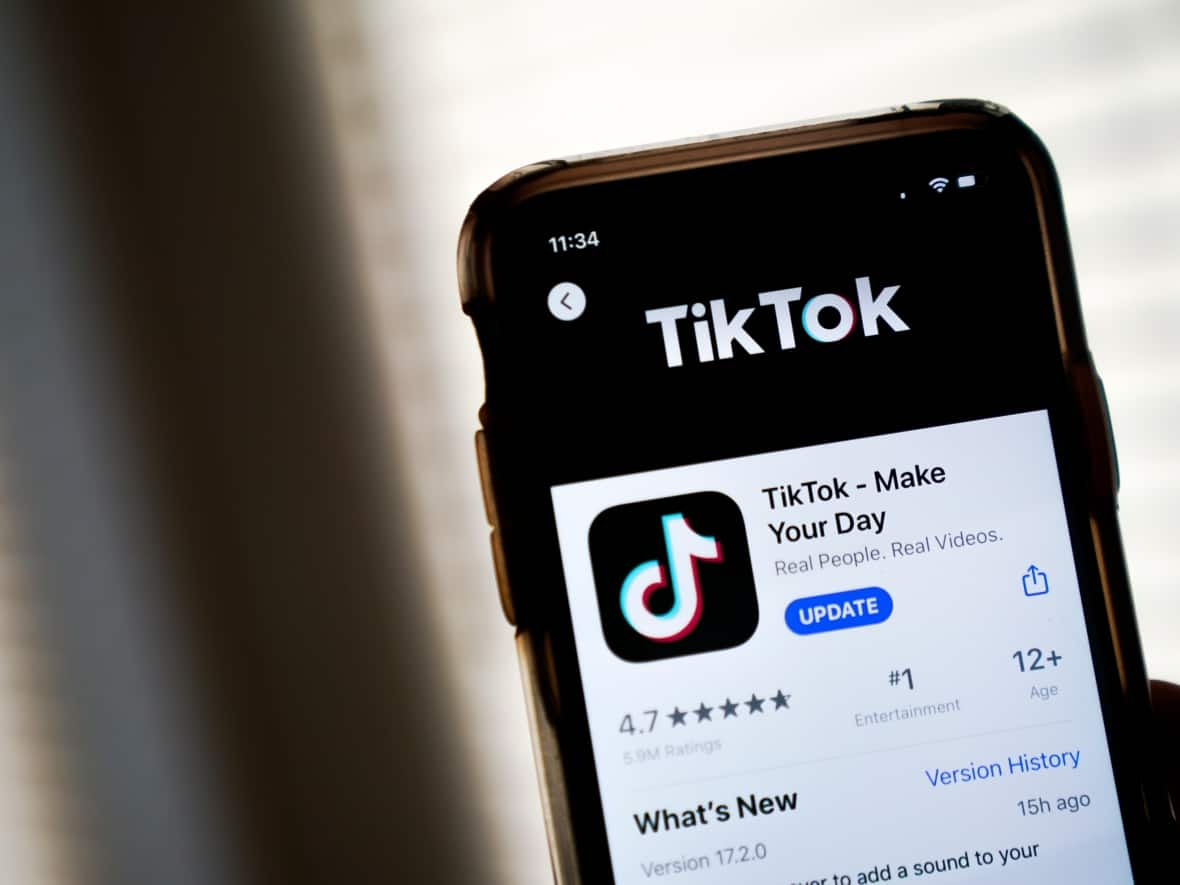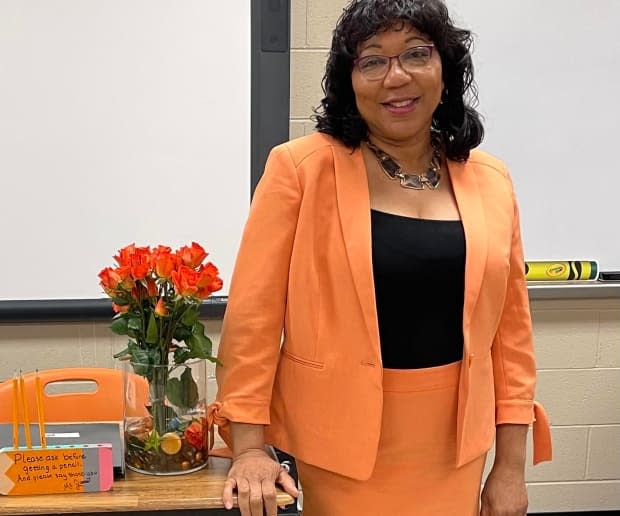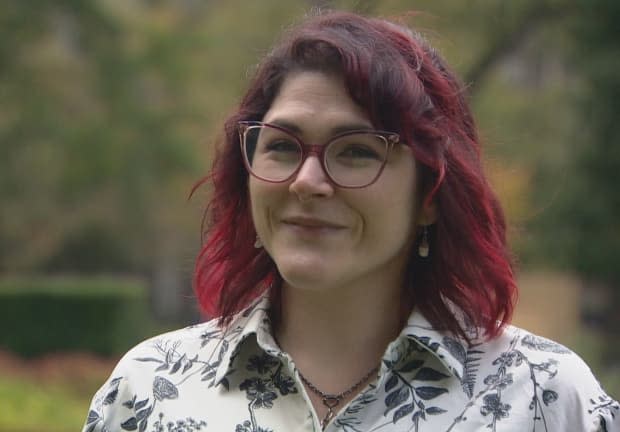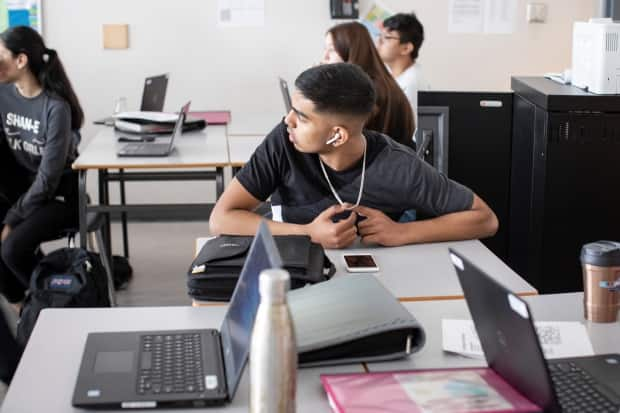Some teachers are using TikTok to reach teens, but concern over app's effects persists

When Shauna Pomerantz saw her daughter's smartphone use rocket up during the pandemic, she investigated and discovered the reason: TikTok videos.
Her next step?
Pomerantz, a professor of child and youth studies at Brock University in St. Catharines, Ont., dug into the world of TikTok alongside her teen. Besides picking up some fun dance choreography together and noting how 14-year-old Mimi connected with friends, Pomerantz also saw TikTok being used as an informal learning tool.
"My daughter was using it to really get up to speed on things like war in Ukraine, COVID-19, sexism and racism, police shootings and murders of people across the globe, particularly George Floyd and Sarah Everard," the professor said.
"She would show me TikToks and then we would talk about them together."
Take a quick peek at TikTok and you'll also find teachers there; myriad accounts highlight fun or silly slices of life from school. However, a growing number of educators are specifically diving into the social media space beloved by tweens and teens in order to reach them, teach them and spark new learning. Meanwhile, others are expressing concern over its use amid narrowing attention spans.
WATCH | Educators tap TikTok to connect, teach tweens and teens:
Pomerantz and her daughter didn't simply watch and react to TikTok videos. After Mimi showed the professor videos about the shocking murder of Everard in the U.K. for instance, the pair began talking about violence against women. Their conversation then shifted to the difference in media attention garnered by a young white victim of violence versus others, who are Black and Indigenous.
According to Mimi, that kind of engagement could be leveraged for the classroom.
"We learn a lot of our news from TikTok ... It would be a good idea for teachers to start using that in their lessons because it could bring more kids in," said the teen, who co-authored a paper with her mom that was published earlier this year in a book of academic essays exploring TikTok cultures.
'Common sense' learning
Describing herself as "the most conservative person" and someone who dresses for the classroom as she would for church, Claudine James (@iamthatenglishteacher) might seem like an unlikely TikTok star.
Yet the small-town Arkansas teacher's easy manner and enthusiastic back-and-forths with students while delivering accessible grammar lessons — snippits of which she started posting to reach students quarantining at home with COVID-19 — have netted her more than 4.4 million followers since Dec. 2020.
"I haven't done any dance moves. I haven't done any twisting. It's just common sense of learning and everyone has a thirst for that," said James, who teaches English language arts and creative writing to Grade 8 students.
James knows that not every educator uses TikTok as she does — she's proud, for instance, that her district embedded her videos in a professional development course about the right way to engage students via social media. Still, she believes teachers must be open and willing to adjust their methods.

She pointed to herself as an example. Never a fan of students listening to audio books before, James said attending a conference that vividly demonstrated the difficulty a person with dyslexia can have reading a book traditionally changed her mind.
James thinks the COVID-19 pandemic has also been a game-changer for educators.
"You can't send someone through a storm and expect them to come out of the storm the same ... Something happened during that storm: our kids were in lockdown. Something happened and we have to be willing to meet them where they're at. That's why I got on TikTok," she said.
"Modify and adjust. That's just what educators have to do."
'A really nice jumping point'
For Danielle Dufault, main host and illustrator for wildlife education digital brand Animalogic (@animalogic), the quick-and-punchy format of TikTok narratives offers a great way to capture the attention of and spark curiosity in students.

"TikTok is a really nice jumping point for education ... You might go to the local library and pick up a book about eels that you just heard about on TikTok," explained Dufault, who also works as a paleontological science illustrator at the Royal Ontario Museum in Toronto.
"I think that is a great way of discovering new information and new content."
With young people so comfortable in the TikTok environment, it makes sense to put high-value educational content there for students to learn and engage with, noted Sue Haas, senior vice-president of digital media global at Blue Ant Media, which produces Animalogic.
"I want [my kids] to be learning about the world around them and certainly I want them to be learning about subjects that they wouldn't naturally gravitate to," said Haas, a parent of a nine-year-old and a 12-year-old.
"If TikTok had a lot more higher-quality educational content ... it would just give them more variety of things to look at and more opportunities to learn."
'Fleeting images'
Yet that very snappy, continuously scrolling format — TikTok offers a constant reel of uber-short videos the app's algorithm has customized for each user, inducing a dopamine response or feeling of reward in viewers' brains as they continue watching — is exactly what concerns educational consultant Paul Bennett.
The director of Halifax-based firm Schoolhouse Institute and adjunct professor of education at Saint Mary's University is wary of its use given what he says Canadian teachers are already facing in the classroom: narrowing attention spans.

"These little videos can perpetuate mythology, incorrect information, slanted views and actually discourage critical thinking," Bennett said.
"It discourages kids from going into more depth, to concentrating, to focusing ... to analyzing it line-by-line. Who's going to analyze anything line-by-line if it's all about just fleeting images?"
He thinks it's fine if teachers simply want to catch students' attention via TikTok, provided it's only used in limited doses and that more detailed, structured learning also happens.
Otherwise, he said, "it's a kaleidoscope of flashing images and immediate dopamine rushes with short videos and that's not conducive to ... serious learning, certainly over the longer term."
TikTok isn't a utopian space, of course, acknowledges Pomerantz, the child and youth studies professor. She's aware many have concerns about the app and are worried about the detrimental effects of social media on youth as well as too much screen time for students.
"That said, [TikTok] is very much a part of kids' lives and to ignore it would be really to suggest that what young people do and care about is not that important," she said.
"Adults are feeding kids information all day long and it would be really fantastic if they also took kids' knowledge and kids' interest into consideration, both in the classroom and at home."


